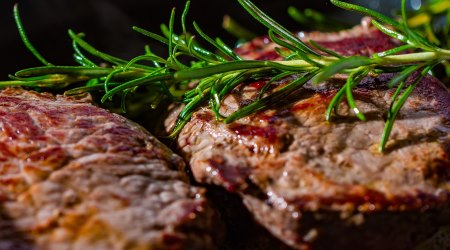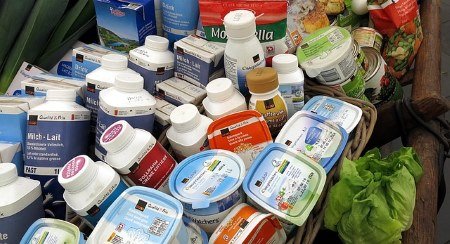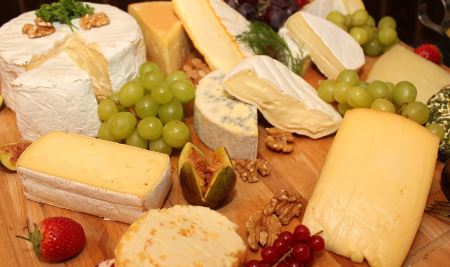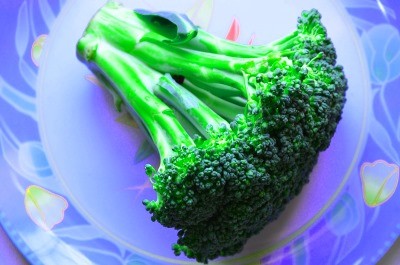Protein foods
Protein foods are an essential component of a healthy diet. Many people who do not consciously eat tend to eat too little protein.
Protein deficiency is no joke, and that someone really has excess protein in their diet is next to impossible.
Those who start to deal with this more often find foods with a higher protein content and, therefore, satisfy their needs. This is especially true for people with special nutritional needs. After all, you don’t want to depend on supplements and must drink protein shakes daily to meet your protein needs.
For this reason, I have compiled protein-containing foods in different categories and have compiled a list of the best high-protein foods for you. It was also important to me that this is food that you can get in most well-stocked supermarkets or in the weekly market.
The article is divided into the following sections
With a single click, you will be taken directly to the section that interests you the most. However, I also recommend reading the introductory chapters.
After reading, you should have enough choice to meet your future protein needs according to your needs and in a variety of ways.
How much protein do you need?
One question many people ask is about the right amount of protein. You may already know your protein needs. If not, I want to give you some tips to find the right amount for you:
In fact, the need for protein is very individual, depending on your personality, your goals and living conditions. However, there are a few hints you can use to be reasonably specific about your personal needs.
As a general rule, 0.8 grams of protein per kilogram of body weight is the basis on which you should start if you want everything in your body to run smoothly and you also have no problems in the medium to long term. … Want to get a protein deficiency. However, this only applies if you are healthy and do not exercise. However, since I recommend that everyone exercise regularly and also stay healthy, this amount does not play an important role in my world.
Therefore, I recommend a minimum amount of 1.5 grams of protein per kilogram of body weight. This is a good guide for athletic people. It can also help build and maintain some muscle mass. If you want to build muscle as efficiently as possible, there is nothing wrong with rounding up to 2 grams.
If you are losing weight and value the maximum possible muscle retention, you should even consume 2.5 grams of protein per pound of body weight.
Please note that these are all guidelines, and you should always see how your body reacts to large amounts of protein. At the recommended amounts, you don’t have to worry about eating too much protein.
About the quality of protein foods
If you are thinking of white foods, you will probably think of meat and dairy products first. However, there are many other foods that are high in protein. Especially those who want to eat vegetarian or vegan (also) should use alternative sources of protein.
It should be noted, however, that not all foods contain the same quality protein. Proteins are always made up of amino acids. The composition varies from meal to meal. Essential amino acids play a crucial role in this. The body cannot manufacture them from other amino acids by itself.
They speak of foods whose composition is close to the human requirement for complete proteins. The term biological value is often used in this context. Most animal protein sources have a very high biological value.
In the case of vegan products, on the other hand, the biological value is often relatively low. This is because various essential amino acids are absent from these foods, or only present in very small amounts. This is especially true for nuts, legumes, grains and vegetables that are high in protein. Hence, it is far from unhealthy food. For this reason, combining these protein sources intelligently with food makes absolute sense.
Personally, I think it makes sense to always use different sources of protein in order to have some variety in our diet.
Other nutrients in food must also be taken into account. For example, some protein-rich foods are also high in fat. This in itself is not bad. However, if you lose weight and define your muscles, it can be difficult to meet your protein needs without exceeding your calorie goal.
Non-Vegetarian Animal Protein Sources
Now we come to protein-containing products. I would like to start with the obvious sources of animal protein. Non-vegetarian foods in this group, in turn, can be divided into protein-containing meat, fish species and seafood.
If they don’t interest you, just keep scrolling until you reach the product groups that interest you.
My 10 Most Protein-Rich Meats
Meat is a classic when it comes to meeting his protein needs. “You just have to eat as much muscle as possible to get big muscles,” a famous bodybuilder once told me. Somehow there is something there. There are hardly any sources of protein that are more beneficial for muscle building than meat. In addition to being very high in protein, this also includes a high creatine content.

Meat is the classic protein supplier
Below are my 10 best meats with the highest protein content (average per 100 grams):
- dried meat (beef jerky *) – about 50-70 grams
- Serano ham – 30 grams
- Lamb chop – 25 grams
- Turkey breast – 24 grams
- Chicken breast – 23 grams
- Rabbit fillet – 22 grams
- Pork schnitzel (natural) – 22 grams
- Fillet of beef – 21 grams
- Kasseller – 20 grams
- minced meat, mixed – 19 grams
My Top 10 High Protein Fish
in comparison, for example, with In southern Europe, we Germans eat relatively little fish. Fish can also be a very good source of protein. When it comes to protein-rich foods, fish certainly shouldn’t be overlooked.
By the way, I like to eat fish as often as possible. This is also because it tastes great to me when cooked well. A grilled tuna steak like this is amazing! This is also due to the fact that fish is not only high in protein, but also because the fat content is mainly composed of valuable omega-3 fatty acids. If I eat a lot of fish, I also need to take omega-3 fish oil capsules.
Below are my top 10 fish species with the highest protein content (average per 100 grams):
- Tuna fillet (in its own juice) – 29 grams
- (real) caviar – 26 grams
- Tuna steak – 25 grams
- Salmon fillet – 22 grams
- Arctic char fillet – 20 grams
- Halibut – 20 grams
- Sea bream – 20 grams
- Trout – 20 grams
- Redfish – 18 grams
- flounder – 17 grams
My Top 10 High Protein Seafood
The sea is so large that there are many other animals that cannot be classified as fish. By the way, I still don’t understand why they are called “fruits.” Although I am very fond of most types of fruits, I do not really like seafood. If you are looking for high protein foods, seafood alternatives to meat and fish are definitely worth a look.
In addition to being high in protein, seafood has the advantage of being very low in energy density. Therefore, you can eat relatively large amounts of protein and at the same time, relatively few calories. If you love and tolerate them, they are a very good source of protein.

A little love and hate of the sea – Seafood
Below are the top 10 highest protein seafood (average per 100 grams):
- North Sea Crayfish – 21 grams
- (giant) shrimp – 20 grams
- Crayfish – 20 grams
- Lobster – 19 grams
- crab meat – 19 grams
- Scallops – 16 grams
- Sepia – 16 grams
- Scampi – 15 grams
- (giant) squid – 15 grams
- mussels – 13 grams
Good vegetarian sources of protein
The vegetarian diet is now very widespread. In a representative survey, about 8% of Germans state that they have a vegetarian diet. So it has long ceased to be unusual if someone does not want to eat meat.
Even if you are not a strict vegetarian, you can try to avoid meat as part of a conscious diet. You can also eat less meat for ethical reasons. If you covered your protein needs from meat alone, you would have to eat a fair amount.
For a variety of reasons, it makes sense to also deal with vegetarian sources of protein.

Also cover with enough dairy. Vegetarians have their protein needs
I have divided vegetarian sources of protein into cheese, other dairy products, and eggs.
My Top 10 High Protein Cheeses
I really like to eat cheese. You could even say that I love cheese. I think you can make almost any hearty meal even better by baking it with cheese. For this reason, I think it’s great that cheese is not only tasty but also a good source of protein.
But be careful: some varieties are very high in fat. You should be aware of this if you want to lose weight or value your calorie intake for other reasons.

Below are my 10 best cheeses with the highest protein content (average per 100 grams):
- Parmesan – 36 grams
- Gouda light – 31 grams
- Harzer Roller – 30 grams
- Emmentaler – 29 grams
- Old Gouda – 29 grams
- Mountain cheese – 28 grams
- Tilsiter – 26 grams
- Goat cheese – 25 grams
- Manchego – 25 grams
- Maasdam – 25 grams
As you can see, the selection of delicious cheese with a lot of protein is quite large. I’m sure there is something for your taste.
Other dairy products (except cheese)
Besides cheese, there are other protein-containing products that are made from milk. Here, as in seafood, the protein content may appear to be low compared to some cheeses. However, I also advise you to always look at other nutritional values. Only then will you decide for or against food to cover your protein needs.
Below are my top 5 dairy products (other than cheese) with the highest protein content (average per 100 grams):
- Dry cottage cheese – 12 g
- Skyr – 11 grams
- Greek Plain Yogurt – 9 grams
- Kefir – 4 grams
- Milk – 3 grams
eggs
Eggs are an absolute classic when it comes to protein foods. They are an excellent source of protein because the amino acids contained in protein are very similar in composition to the human body. And only if you didn’t already know this: eating eggs does not have a negative effect on cholesterol levels.
Much better than their reputation – chicken eggs
A list of the different types of eggs for this article will be compiled a little silly. Differences between free range, farming and demeter, and white and brown and white chicken eggs are negligible. Other eggs (other than possibly quail eggs) are not available in most regular supermarkets.
- Chicken egg (whole egg) – 13 grams
- quail egg – 13 grams
- Chicken egg (egg white) – 11 grams
In most cases, the difference between a whole egg and an egg white plays a role. However, this is mainly because the fat content of the egg yolk is significantly higher.
Vegan protein products
Growth has slowed somewhat after the real vegan hype a few years ago. But at least about 1% of Germans identify themselves as vegans in polls. Even if it doesn’t sound like a lot at first, there are more people than there are residents of Frankfurt am Main.
Either way, there are good reasons to look like omnivores or vegetarians in this category. A little variety doesn’t hurt, and in the end it’s always the overall balance. In my opinion, in any case, it makes sense to know about the consumption of animal products and, if necessary, reduce them.
I’ve divided the following protein-rich vegan foods into subgroups: beans, seeds and nuts, cereals, mushrooms and vegetables.
beans
Most people think of beans first when it comes to meeting their protein needs with plant-based foods. In this context, soy is especially well known for its various processing methods (especially tofu).
Here are my top 10 beans and bean foods with the highest protein content (average per 100 grams):
- Lentils – 26 grams
- Tempeh – 19 grams
- Smoked Tofu – 18 grams
- Natural Tofu – 14 grams
- Edamame – 14 grams
- Soybeans – 12 grams
- beans – 8 grams
- Chickpeas – 7 grams
- White beans – 7 grams
- peas – 6 grams
By the way,
beans are more versatile than you might think. You can even use it to make a delicious low carb chocolate cake!
seeds and nuts
There are seeds and nuts in between snacks. Plus, you’re doing yourself something good because many nuts are rich in protein and essential fatty acids. However, in terms of calories, they are significant due to their relatively high fat content.

He knew for a long time that nuts are real, natural energy boosters, and rich in protein and valuable nutrients!
Below are my 10 most protein-rich seeds and nuts (averages per 100 grams):
- pumpkin seeds – 35 grams
- Hemp seeds * – 35 grams
- pine nuts – 32 grams
- Peanuts – 29 grams
- Sunflower seeds – 26 grams
- Flax Seeds – 24 grams
- almonds – 24 grams
- Chia seeds * – 22 grams
- Walnuts – 16 grams
- Brazil nuts – 14 grams
cereals
Cereals are generally referred to as carbohydrates. This is also completely logical, since they are the main nutritional group in grains. However, there are also grains and foods made from grains that are considered protein-rich foods with a lot of protein. However, you should always keep an eye on your carbohydrate and calorie intake.
Below are my top 10 grains and the highest protein foods (average per 100 grams):
- Seitan – 28 grams (be careful with gluten intolerance)
- Quinoa * – 15 grams
- Amaranth – 15 grams
- Recorded cereal – 14 grams
- Oatmeal – 14 grams
- durum wheat semolina – 13 grams
- millet 11 grams
- wheat semolina – 11 grams
- Wheat flour – 10 grams
- Buckwheat – 10 grams
Mushrooms
Mushrooms tend to have a very low energy density. So there are relatively few calories per mass. In absolute terms, there are no common protein bombs among mushrooms. An exception is Fusarium venenatum, which is marketed as a meat substitute under the Quorn brand. However, there are people who are (severely) allergic to it.
In addition, mushrooms are usually rich in fiber and minerals. This makes them a good addition to your diet, especially as they can be delicious when cooked properly.
Below are my 5 best mushrooms with the highest protein content (average per 100 grams):
- Quorn (mycoprotein) – 16 grams (allergic reactions possible)
- White mushroom – 4 grams
- Oyster mushrooms – 4 grams
- Mushrooms – 3 grams
- Chanterelles – 2 grams
Vegetables
Vegetables are similar to mushrooms in energy density. In many cases this is even lower due to the very high water content. In stark comparison, it seems a little fun to call vegetables a protein food or even a high protein food.
However, with plenty of fiber and valuable vitamins and minerals, vegetables are definitely a part of your menu. You cannot eat enough vegetables. In relative terms, however, protein content can be quite relevant. For example, a pound of broccoli also adds 40 grams of protein to your daily balance.

Favorite and also right at the forefront in terms of protein content – broccoli
Here are my top 5 highest protein vegetables (average per 100 grams):
- Garden cress – 4 grams
- Broccoli – 4 grams
- spinach – 3 grams
- Cauliflower – 3 grams
- Zucchini – 2 grams
Final Words on Protein Food
Proteins are an important building material for various cells in the human body and are essential for vital metabolic processes. Therefore, it is important that you always have enough protein.
Fortunately, there are many protein foods to choose from. So you don’t have to drink protein shakes every day or eat meat and eggs all the time to meet your protein needs. Protein-rich foods can also be varied.
In this article, I hope I was able to show you some options to help you get your protein even easier in the future.
If you are most interested in low-carb or even no-carb foods, I also wrote an additional article.
Regards

And don’t forget: your health is your health.
